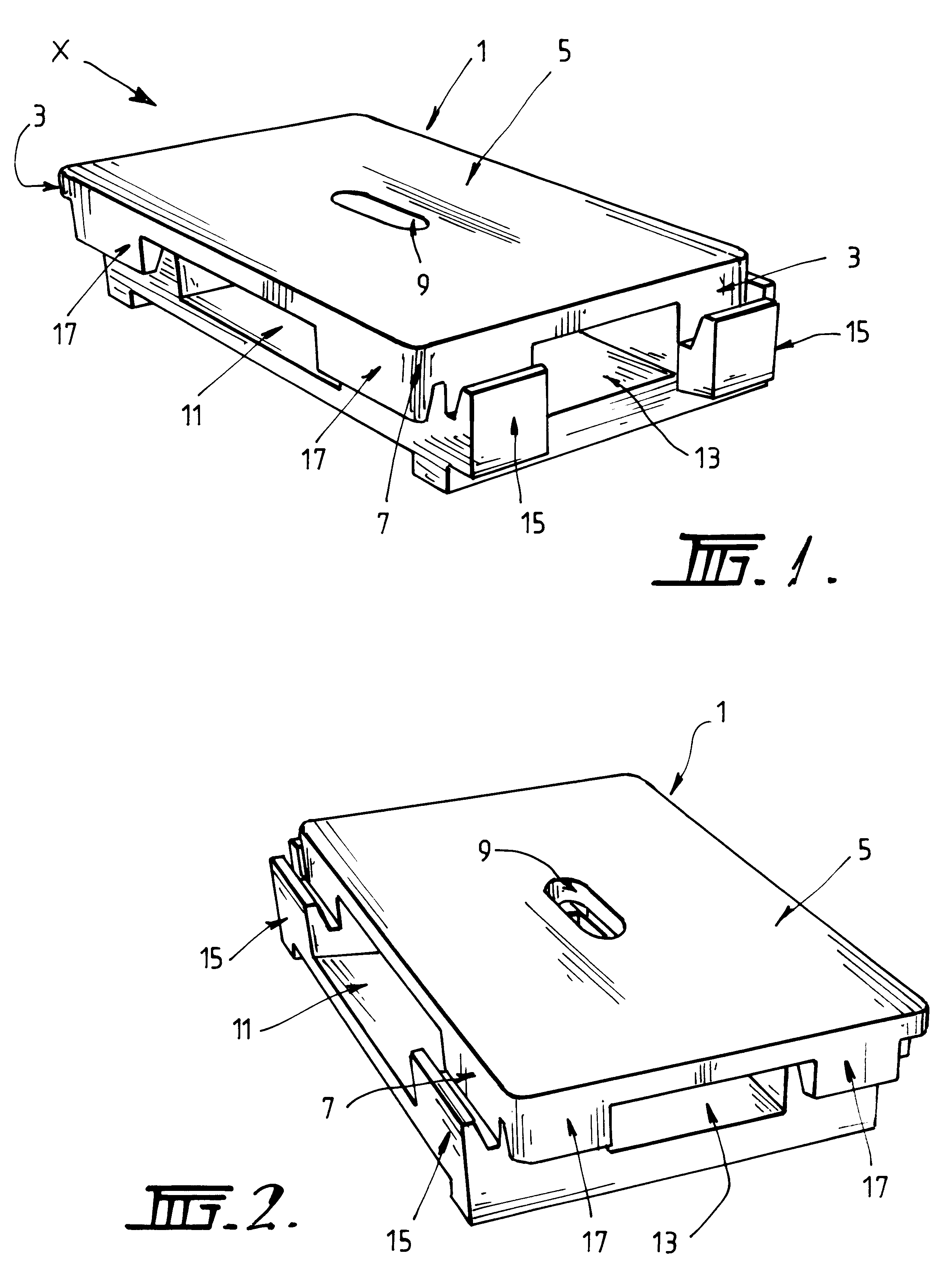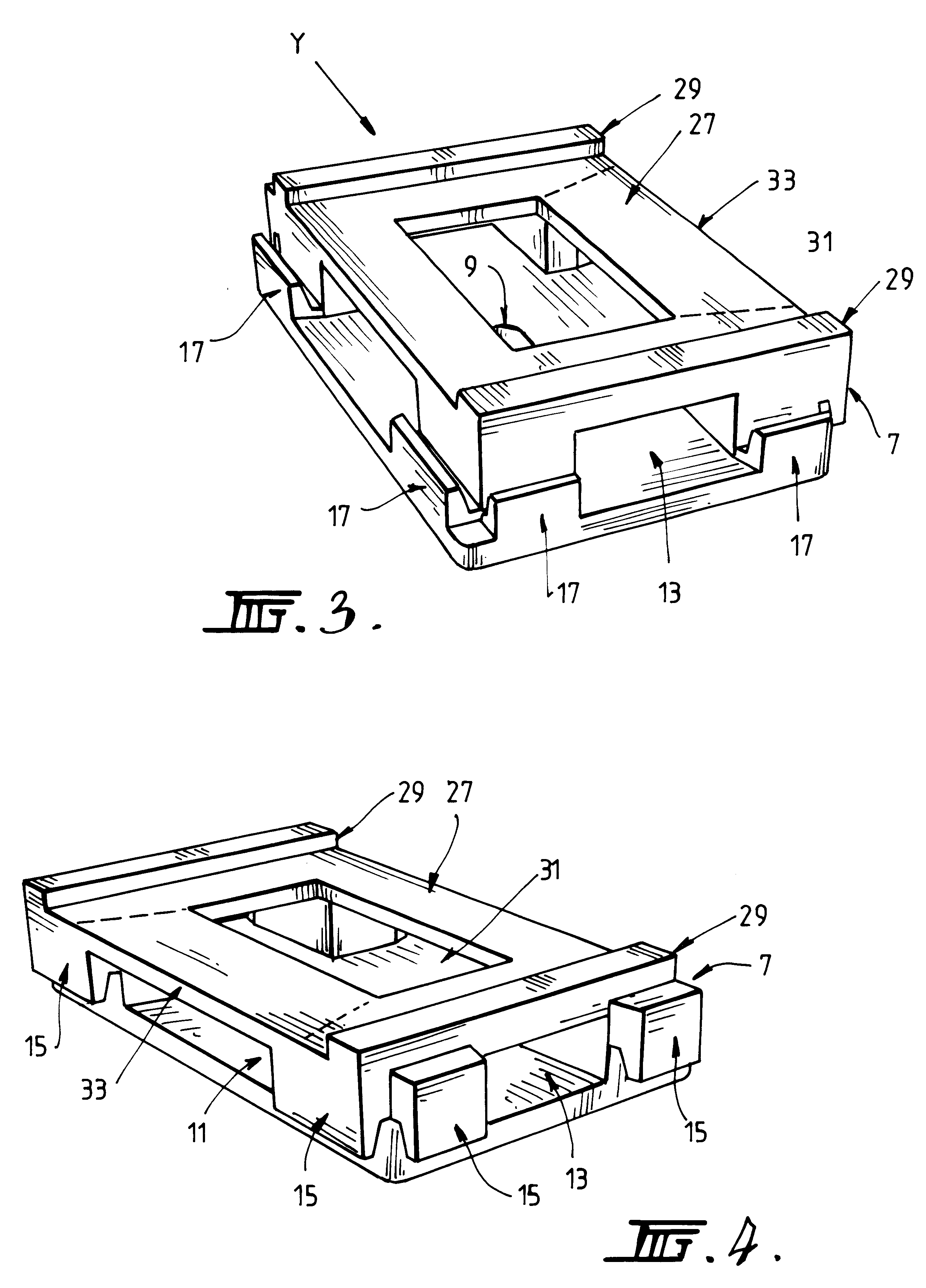Modular pallet structure
a pallet structure and module technology, applied in the field of pallet structures, can solve the problems of inconvenience for the business which uses, cost (including the cost of interruption of operations), and the general inability of pallets to meet the needs of small lifting operations
- Summary
- Abstract
- Description
- Claims
- Application Information
AI Technical Summary
Problems solved by technology
Method used
Image
Examples
Embodiment Construction
Preferred embodiments of the present invention will now be described by way of example only, with reference to the accompanying drawings, in which:
FIG. 1 represents a perspective view of a modular pallet structure constructed in accordance with the present invention;
FIG. 2 represents a perspective view of the structure shown in FIG. 1, when viewed generally in the direction of the line "X" in FIG. 1;
FIG. 3 is a perspective view from underneath of the structure shown in FIG. 1;
FIG. 4 is a further underneath perspective view of that structure, when viewed generally in the direction of the line "Y" in FIG. 1;
FIG. 5 is a plan view from above of the structure shown in FIG. 1;
FIG. 6 is a plan view of the structure from underneath;
FIG. 7 is a side elevation of the structure shown in FIG. 1 when viewed in the direction of the arrow A shown in FIG. 5;
FIG. 8 is a side elevation of the structure when viewed in the direction of the arrow B shown in FIG. 5;
FIG. 9 is an end elevation of the struc...
PUM
 Login to View More
Login to View More Abstract
Description
Claims
Application Information
 Login to View More
Login to View More - R&D
- Intellectual Property
- Life Sciences
- Materials
- Tech Scout
- Unparalleled Data Quality
- Higher Quality Content
- 60% Fewer Hallucinations
Browse by: Latest US Patents, China's latest patents, Technical Efficacy Thesaurus, Application Domain, Technology Topic, Popular Technical Reports.
© 2025 PatSnap. All rights reserved.Legal|Privacy policy|Modern Slavery Act Transparency Statement|Sitemap|About US| Contact US: help@patsnap.com



